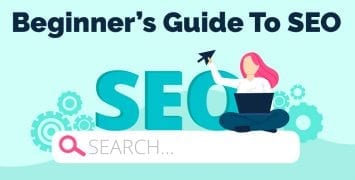Search engine optimization (SEO) should rank very high on the list of top priorities for every small business owner. The formula is simple here: you have a website and you want it always to appear among the first few results on the SERP. As a result, more people will see your website and visit, which should generate more leads or sales.
Since small business owners most often have pretty limited budgets, this entire SEO process should be done in a thrifty, but productive way. In the next five points we’re going to show you how to get there.
Setting a sustainable SEO budget
Now that you’re entering the big scene, you have to be aware of the fact that large companies spend tens of thousands of dollars monthly on SEO. Online competition is getting tougher and tougher. This automatically means that every business entity has to make a bigger effort to stay ahead of the curve.
In line with that, spending less than a thousand dollars a month will most probably yield too slow progress. It will have a negative effect on your business altogether.
Therefore, commit at least $1,000 per month for your initial SEO budget. Of course, this the minimum amount of money an SMB-owner should use for website optimization.
This budget should be used to pay for professional SEO services or invest them on your own for some major SEO procedures.
Naturally, as your business keeps growing and your budget expanding, you should invest more in your SEO assets.
Setting your goals and keywords
Together with the initial SEO budget, it’s also important to set your goals for the first month or so. Do you want to be first on the list search engine results? Maybe you want to have a certain number of visitors on your website in a specific period of time? Or perhaps your goal is to increase lead generation and target your potential clients?
The goal you choose for your SEO strategy will determine how you’re going to spend your budget. What’s more, it will also set the path for the keywords you’re going to use.
The easiest way to search for the most popular words for your niche of work is to use Google Keyword Planner. It’s a free tool and should help you with keywords, even if you’re only learning about SEO.
Once you’ve spotted the most frequent search queries for your niche, it’s time for some deep thinking and reasoning.
On the one hand, choosing the most popular keywords is a good start for a new business in the online environment.
On the other, such keywords will keep you in the shade of established, more renowned business entities in your field.
Because of that, use part of your SEO budget for counseling with SEO professionals. They’ll tell you how to stand out from the crowd and optimize your website with some original keywords and other features.
Lean on the local elements
Many small business owners first concentrate on their local markets. Even if you have big plans on a global scale, you’ll need to start from the local level.
This also an extremely SEO-friendly strategy. Since Google is making a great effort to make GPS-enhanced recommendations to its users, targeting your local audience is a perfect tactic in light of such efforts.

What you need to do to put local SEO features to use is to clearly state your name and your address. Mentioning your business name throughout the website is a common SEO strategy, but make sure to add it to the About page and the Contact section.
Speaking of the Contact section, it’s vital to add your address, as well as your map location to that part of your website. That way, you’ll be easily located by GPS and the Google ad system. In turn, your website will be offered to more people in your vicinity when they use search queries that target your keywords.
Work on website structure
User experience can also contribute to website optimization. Therefore, you should do your best to increase the functionality and structure of your website. These things are affordable and they can really add something special to your website.
First and foremost, your visitors need to be able to get back to the homepage every single moment they spend on your website. This way it’s vital to highlight the homepage or sitemap button on every single page of your website.
Apart from that, add share buttons for the mainstream social media to your pages. This especially important in the blog section. That way, every visitor will be able to immediately share interesting content from your website. As a result, your conversion and generation rates can significantly rise in no time.
Further, if you sell things via your website, features such as the checkout page and payment steps have to be as straightforward as possible. In line with that, commercial SMB-websites shouldn’t contain any distracting features on the payment page. Moreover, it’s smart to offer several online payment options to your visitors.
If you have all the elements necessary to make a smooth payment, your visitors will keep coming back to your website and sharing your content. This will help your business more than thousands of dollars spent on bad advertising tactics. Because of that, the structure and content of your website are extremely important SEO-features.
The final word
Optimizing your website for more traffic, higher conversion rates and better revenues requires hard work and a certain amount of creativity. Still, if you sit down and learn step by step, you’ll soon realize that SEO isn’t rocket science. What business owners should do is choose the right keywords, pay great attention to the location settings, and make their website as functional as possible. We hope that the tips provided in this guide will be properly used to improve the SEO features of your business website.




